- Joined
- Aug 15, 2000
- Messages
- 18,482
Beryl and I have debated this before.
I have always thoguht that what goes in, must = what comes out. There fore I would expect if a ray of parallel light like this example , that we have been playing with recently on the MSU site, should show the same thing in reverse.
In playing with DiamCalc, it seems that the example on the right side (2) results in more dispersion.
If I ramble on - the ray entering at a steep angle is dispersed more and then continues to be dispersed as it passes through the longer length of diamond. The ray on the left (1) is being dispersed mainly as it leaves the diamond, and therefore will be less dispersed because the distance travelled between the primary dispersion is less.
Let me try that another way:
Stone (1) has about 7cm of dispersion distance from stone crown facet to top of my screen. Where as stone (2) travels through about 7cm of diamond then 7cm of air, before reaching the same approximate place.
Now if you view the diamond from 45cm away - this extra 7cm might not make much difference. But this seems to rip apart an idea that I have always assumed was right?
Any ideas folks?
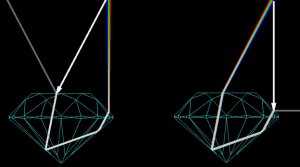
I have always thoguht that what goes in, must = what comes out. There fore I would expect if a ray of parallel light like this example , that we have been playing with recently on the MSU site, should show the same thing in reverse.
In playing with DiamCalc, it seems that the example on the right side (2) results in more dispersion.
If I ramble on - the ray entering at a steep angle is dispersed more and then continues to be dispersed as it passes through the longer length of diamond. The ray on the left (1) is being dispersed mainly as it leaves the diamond, and therefore will be less dispersed because the distance travelled between the primary dispersion is less.
Let me try that another way:
Stone (1) has about 7cm of dispersion distance from stone crown facet to top of my screen. Where as stone (2) travels through about 7cm of diamond then 7cm of air, before reaching the same approximate place.
Now if you view the diamond from 45cm away - this extra 7cm might not make much difference. But this seems to rip apart an idea that I have always assumed was right?
Any ideas folks?



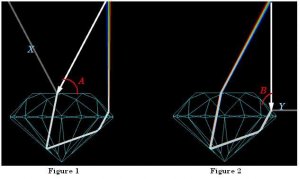
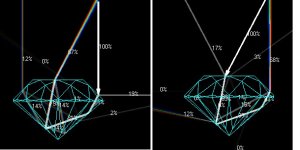
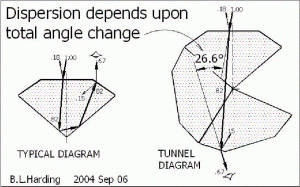

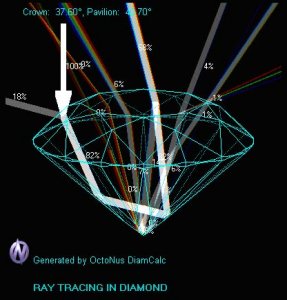
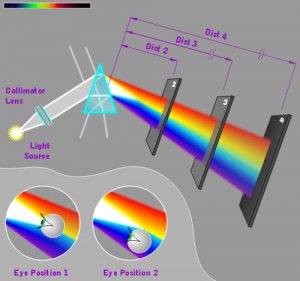
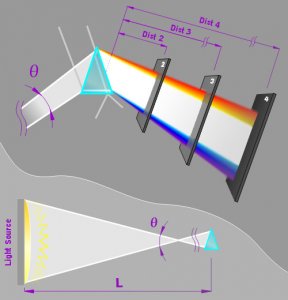
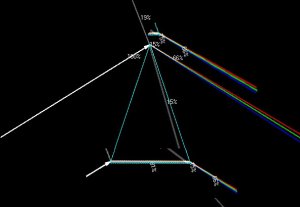
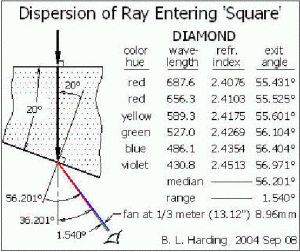
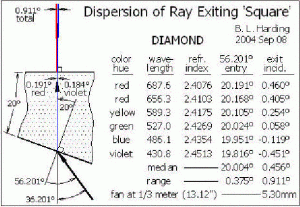
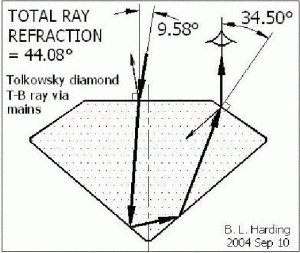


300x240.png)